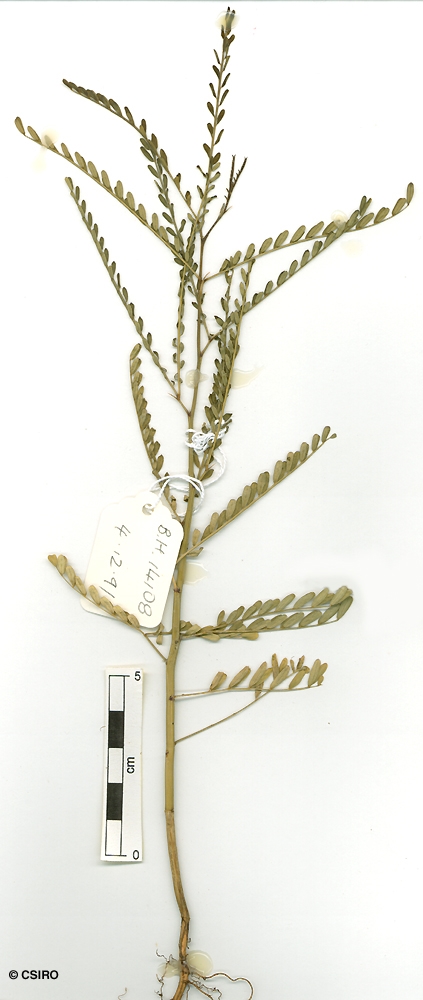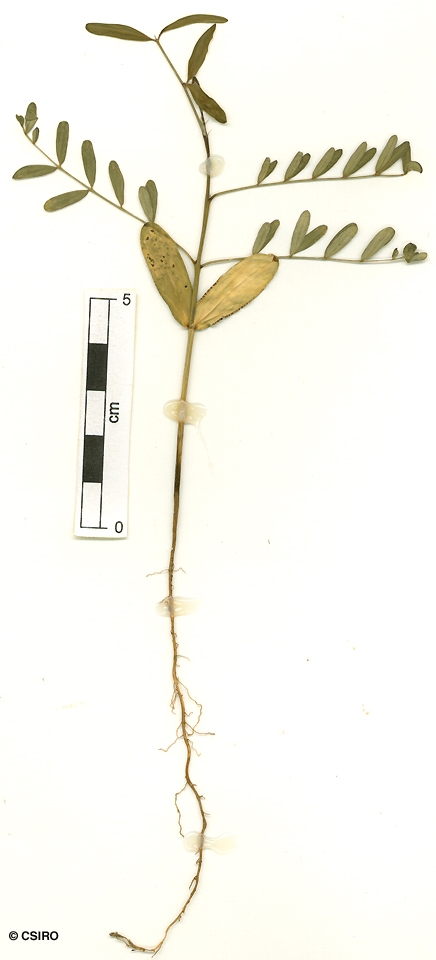Australian Tropical Rainforest Plants - Online edition
Parkinsonia aculeata L.




Linnaeus, C. von (1753) Species Plantarum 2: 375. Type: Habitat in America calidiore.
Parkinsonia; Horsebean; Jerusalem Thorn; Retaima
Can grow into a small spreading tree but usually flowers and fruits as a shrub about 3-4 m tall.
Pods brown, 4-15 x 0.6-0.8 cm, constricted between the seeds. Endosperm hard, almost clear.
Seed germination time 12 days. Cotyledons about 25 x 9 mm. First pair of leaves pinnate, each with about ten leaflets. At the tenth leaf stage: leaves bipinnate with the compound leaf rhachis ending in a spine. Compound leaf with two main branches each with about 12-14 pairs of leaflets. Leaflet blades about 4-5 x 1.5 mm.
An introduced species originally from Central America. Occurs in WA, NT, NEQ, CEQ and widespread in more inland areas. Altitudinal range in northern Australia from near sea level to 400 m. Usually grows in savannah woodland or open forest on heavy clay soils but occasionally found on the margins of monsoon forest or vine thickets.
Although one of the common names for this species is Jerusalem Thorn it is not the plant used to make the biblical Crown of Thorns which was probably made from Paliurus spina-christi.
Leaves are eaten by sheep but are not favoured by cattle. May cause weed problems in northern pastures. Produces little forage but has some potential overseas for production of fuel wood. A minor source of pollen for honey bees. Hacker (1990).





